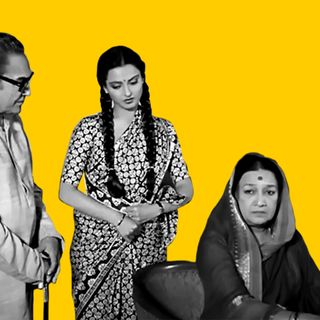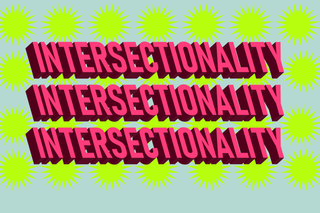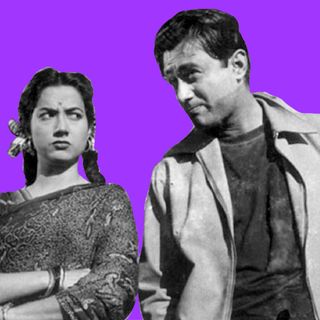
Words Mean Things: ‘Intersectionality’
Intersectionality was a powerful concept to describe oppressive systems. Eventually, it became too encompassing to meaningfully critique anything.

In Words Mean Things, we unpack weighty words whose meanings have been sacrificed to hot takes.
A few days ago, prominent anti-caste voice Suraj Yengde tweeted: “intersectionality is anti-dalit.” This was is a position he has held for sometime — in 2022, he tweeted “[I]ntersectionality in India is a scam.” There’s some heft to the claim: over the last few years, the term intersectionality has gained steady momentum in the zeitgeist, becoming a heavily searched Google term — even appearing in the speeches of Hollywood award show hosts. But as the word got more mainstream, it began to lose its punch.
Take it from the academic Kimberlé Crenshaw, who coined the term in 1989: “Intersectionality can get used as a blanket term to mean, ‘Well, it’s complicated’… Sometimes, ‘It’s complicated’ is an excuse not to do anything,” she said in a 2017 interview.
Crenshaw defined intersectionality as a tool to look at the deficiencies of the American legal system, which failed to recognize oppression that Black women experienced by virtue of their race and gender. As an academic coinage, intersectionality was an overnight sensation — finding its way into queer theory, abolitionism, anti-racist, anti-caste, and feminist texts as the defining tool to help understand how oppression works. The slogan “smash Brahminical patriarchy” also spoke to the urgency of recognizing the joint working of caste and patriarchy in shaping the contours of womens’ lives, especially Dalit womens’.
But with its entry into the mainstream media ecosystem, intersectionality became a catch-all word that many in positions of power deployed for themselves — arguably, at the expense of using it to describe systems. Savarna women in the Global North describing their experiences as brown women are a case in point — and speak to Yengde’s critique of the term being used to disguise caste power.
And herein lies the problem: when intersectionality is used to assert an individual’s own identity, it inevitably focuses only on identity-based oppression, rather than privileges that also shape lived experience. When this happens, identity is seen as a mosaic of different marginalizations — caste, gender, able-bodied-ness, sexuality are all seen as categories that add on to one another, rather than all intersecting in complex ways that make each lived experience unique. As a result, intersectionality in the mainstream, often leads to tokenism — wherein a handful of Black trans women, for instance, are treated as representative of the Black trans experience overall, and are called upon to speak for it in media and political spaces. This is in lieu of actually recognizing the systems that disproportionately harm Black trans women’s material lives.
Related on The Swaddle:
How Privilege Discourse Can Distort Social Justice
Moreover, it’s also overwhelmingly used to critically study and analyze moments in pop culture, rather being used to form solidarities to organize. “When self-purportedly ‘intersectional’ feminist analysis is only ever applied to rich and famous people, it inherently neglects the very important intersection between gender and class, meaning that issues primarily affecting poor women are ignored,” writes Abi Wilkinson in Current Affairs.
Take the fact that increasingly, individuals have been called — and celebrated — as intersectional. White American politician Elizabeth Warren is one example: Warren was praised as the first intersectional candidate, yet her foreign policy track record — including brushing off Israel’s bombing of Gaza, supporting a coup of Vietnam — is anything but. “To be fair, Americans are generally indifferent to the bombing and immiseration of brown people overseas regardless of gender. But a truly intersectional feminism — like a truly international socialism — needs to be concerned with everyone, everywhere,” writes Lyta Gold.
Another flaw in how people use intersectionality, for many, is assuming that it’s an umbrella term to describe all possible identity-based marginalizations occurring together. Class, however, isn’t an identity — it’s a political status.
The key issues are these: intersectionality has turned into a noun rather than a tool, deployed at the expense of considering class and, often, inevitably excluding other identities while seeming to encompass all. “To achieve legitimate status as a complete theory, intersectionality would have to be able to encompass everything and apply to every context,” wrote scholar Amund Rake Hoffart. But this is an impossible ideal — leading to its dilution over time.
Instead, many argue that for intersectionality to be reclaimed and used as a way to build solidarities across coalitions, rather than fragment them even further. To reclaim it, it’s important to direct it back against systems to recognize how they work. Then, we may begin to recognize not only the fact that Dalit women face higher rates of sexual violence because of how their femininity is defined by caste, but also how the legal system has only two ways of addressing the problem — sexual violence, or caste violence. Rarely both.
Rohitha Naraharisetty is a Senior Associate Editor at The Swaddle. She writes about the intersection of gender, caste, social movements, and pop culture. She can be found on Instagram at @rohitha_97 or on Twitter at @romimacaronii.
Related


‘The Romantics’ Shows the Thinning Line Between Documentaries and PR
